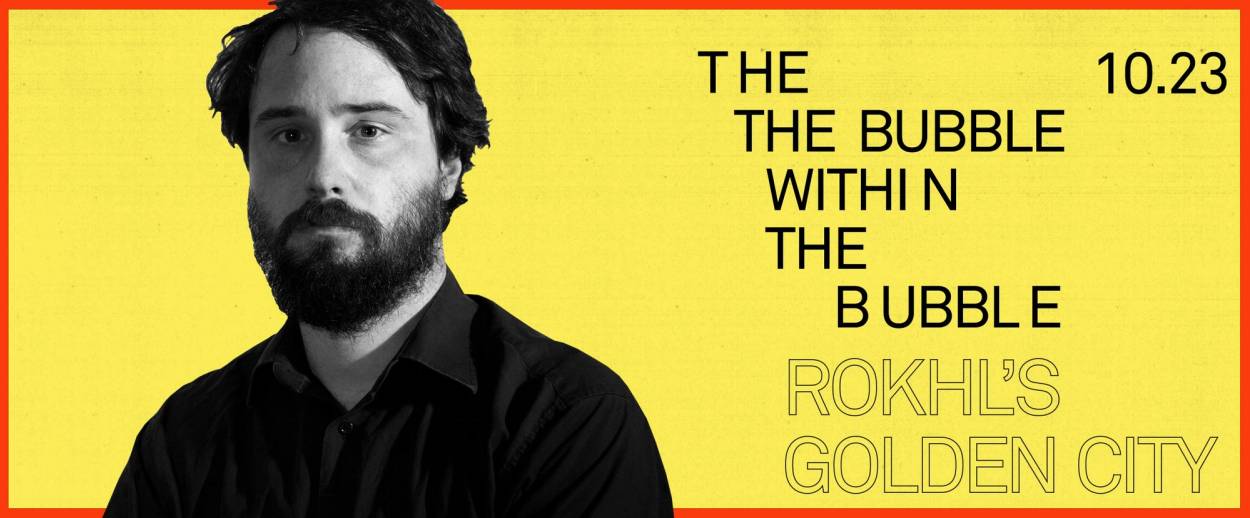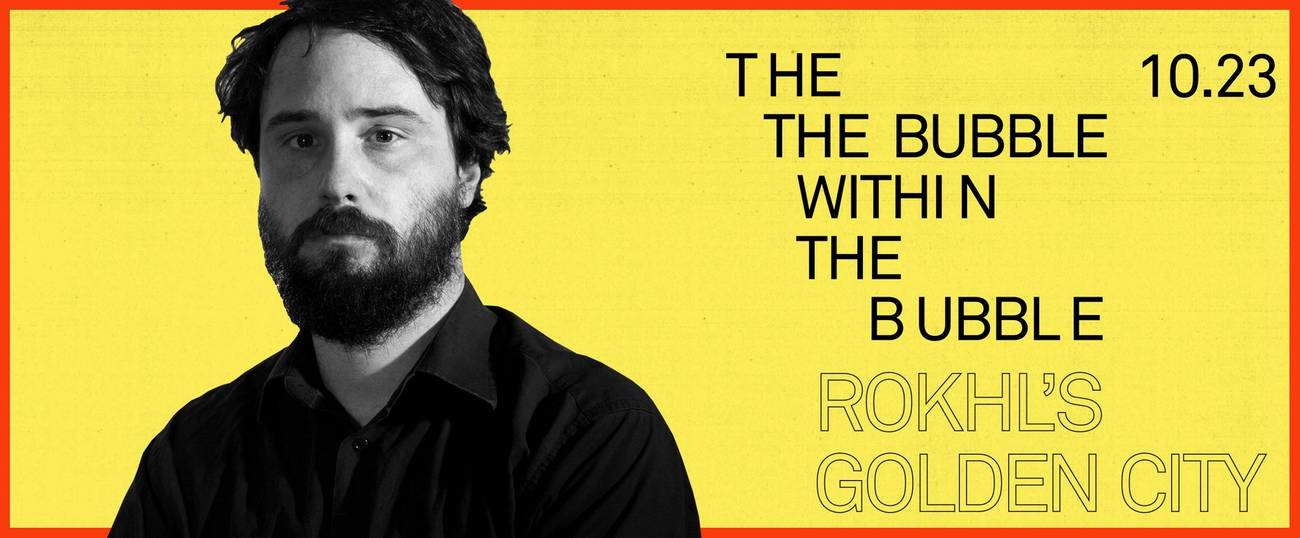Yiddish: Not Just for Jews
Rokhl’s Golden City: Why non-Jews are drawn to the language and its culture




Last January, the national archives of Canada made news when it acquired a book published by the Third Reich in 1944 and taken from the fuehrer’s own library.
It wasn’t provenance that drew international headlines about the book, though; it was the subject. Called Statistics, Media, and Organizations of Jewry in the United States and Canada, the volume contained detailed information about the Jewish communities of North America. The book was designed to aid the Third Reich in its eventual invasion of the continent. The author was Heinz Kloss, a major figure in socio-linguistics and minority languages who had spent time in North America as a researcher.
What most of the coverage of the purchase didn’t note was that Kloss was a specialist in Yiddish linguistics.
Before the war, part of Germany’s official policy was to strengthen links between Germany and ethnic Germans, and German speakers, around the world. That’s where Kloss, and Yiddish, came in. In the 1920s and ’30s, Kloss was in touch with leading Yiddish scholars in Eastern Europe, including holder of the first German chair of Yiddish, Solomon Birnbaum, and YIVO research director Max Weinreich. According to Kalman Weiser in his article “‘One of Hitler’s Professors’: Max Weinreich and Solomon Birnbaum Confront Franz Beranek,” in 1927 Kloss even proposed a Yiddish chair as part of a planned institute of Germanic languages. Needless to say, the plan never came to fruition.
Franz Beranek, the researcher at the center of Kalman Weiser’s article, was still publishing his work on Yiddish dialectology in 1941, at the very moment his government was exterminating the object of his study. After the war, Beranek was eager to get back to this work. Weiser documents his efforts to reestablish links with his prewar colleagues like Birnbaum and Weinreich, with mixed results.
It took me a minute to get my mind around Nazi Yiddishists, but it makes sense. Given that Yiddish is a Germanic language, it shouldn’t be surprising that its history as an academic subject tracks the image of the Jew in the German imagination, up to and including “Hitler’s Professors.” Beranek wasn’t even necessarily a dedicated Jew-hater when he served the Third Reich. But whether or not Kloss and Beranek (or any other German scholar of Yiddish) were sincere Jew-haters, their worldviews were shaped by their privilege and position at the top of a socio-cosmic order in which Jews had always been at the bottom, long before the institution of the Nuremberg laws.
Alexander Beider describes the study of Yiddish as a creation of German Christians, who framed the language as a broken version of “real” German. The earliest proto-textbooks on Yiddish were written in the 18th century by German Christians, often with a missionizing purpose. Johann Heinrich Callenberg, for example, was a theology professor who taught Arabic and Yiddish and produced one of the first Yiddish dictionaries in 1736. Unlike most other scholars, Callenberg considered Yiddish to be a language in itself. The prevailing view, however, was that Yiddish was something less than: a mongrel, a mishmash, and, above all, a corruption of German. What’s alarming is that in 2019, you can find American Jews describing Yiddish in the exact same terms as an 18th century Christian missionary. Some feel they have to defend modern Hebrew by diminishing “makeshift” Yiddish as a “relic,” a term which manages to both insult and invoke Christian supersessionism. Even serious writers casually refer to Yiddish as “mongrel words.” When I tell readers it’s time to decolonize Yiddishkayt, this ain’t a bad place to start.
Today, there’s an uncomfortable corollary to the icky mischling hypothesis of Yiddish. Sure, Yiddish may be an atonal symphony of phlegmy insults and gefilte fish burps, but it’s our atonal symphony of phlegmy insults and gefilte fish burps. Non-Jews who claim authority in the realm of Yiddish culture are often met with a sort of hostile incredulity. Because, in this view, Yiddish isn’t even a language, so it cannot be learned. And even if it could be learned, why would someone who could do—and be—anything want to do and be Yiddish? Sounds fishy.
*
Consider this: The great project of 20th-century Yiddish was to transform the language into a medium for high culture and to create a world literature capable of standing with other great literatures. And the crazy thing is, they succeeded. How do we know? Because, as much as our neglect of Yiddish literature has made it inaccessible, non-Jewish readers and translators—even those far from Germany—continue to be drawn to it.
Two of the most interesting theater artists working on the Yiddish stage today are Shane Baker and Caraid O’Brien. Both have created stunning texts, translating in and out of Yiddish; neither had any emotional connection to Jewish history before falling in love with Yiddish literature.
I know O’Brien, I know Baker. I’m fairly well acquainted with the inherent value of Yiddish culture. And still, there have been times when I, too, carried some not altogether logical baggage with me into the classroom. I’ll admit, for instance, that I was a little skeptical when I met Daniel Kennedy in 2008 when we were both students in the Vilnius Yiddish Institute summer program. Who was this Irish guy and what the hell was he doing there? By far, the largest contingent of non-Jewish Yiddishists comes from places where recent Jewish history is painful and often highly contested: Eastern Europe and Germany.
Eleven years later, Kennedy is the co-founder of a translation publication collective, Farlag Press, and has not one but two excellent Yiddish translations coming out before the end of 2019—not to mention a slew of short stories he’s translated and published across the literary world.
I asked Kennedy what it’s like to be an outsider inside an ingroup of outsiders. “There’s the bubble and then there’s bubbles within bubbles,” he said. “The closer to the center you get, the more welcoming and friendly and relaxed the Yiddish world is.” The problem is when you float closer to the edges, where sentimental attachment to Yiddish is more a matter of identity than a shared language. It’s in those spaces that boundaries are more highly policed and in which Kennedy has at times felt unwelcome: “There’s often weird questions, rude questions, personal questions, accusational tones … ‘Ah, but you can’t really learn Yiddish, it’s something you have to be brought up with,’ says the Anglophone monoglot. ‘It doesn’t have a grammar,’ interjects a time traveler from the 19th century who also happens to be there for some reason.”
There can also be an element of resentment toward “outsiders” when you yourself have been foreclosed from the resources for heritage-language acquisition, or have remained on the language-learning-struggle bus far longer than is seemly. In this regard, I secretly treasure the fact that, as Kennedy revealed to me in our chat, after 10 years of taking Irish in school, he still can’t string together a sentence. Gey veys.
Like many people who end up in the Yiddish world, Kennedy is drawn to learning new languages and he now does professional literary translation in French, German, and Yiddish. He describes himself as the kind of person who would become obsessed with a topic, master it, and move on. Except as you get older the process slows down and, he said, “you can end up getting stuck on whichever passion you had when your brain began to slow down.” For him, it happened to be Yiddish.
For Germans and Eastern Europeans, there’s often an element of local healing work to their immersion in Yiddish. While that work can bring its own delicate dynamic of reclamation and appropriation, it offers a satisfying thunk of an explanation. Kennedy has no such thunk to offer, only the eminently logical experience of reading Yiddish literature in translation at university and wanting more.
Becoming a translator was a logical turn for Kennedy. “I’ve always liked the idea of being a writer,” Kennedy said, “but I hate writing and never succeeded in actually writing anything.”
It’s the kind of thing you can imagine being said by Fliglman, the hero of one of Hersh Dovid Nomberg’s Warsaw Stories, a collection of which has just been brought out by the Yiddish Book Center, with Kennedy’s excellent translation. As Kennedy writes in the introduction, the name became a “byword for the type of young men who came to the cities to live new lives as intellectuals, philosophers, teachers, and artists, cut off from tradition, estranged from their community, while remaining unable to assimilate fully into modern Europe.”
“Fliglman” was Nomberg’s literary breakthrough, and rightly so. The story is a heartbreaker, and the cigarette smoke practically rises from the page. At first we’re tempted to laugh at Fliglman, a fifth-floor aesthete who pays his landlady an extra ruble for a room where the moon shines in. He prefers the company of books to people and is flustered by the quirks of human beings. But gradually, Fliglman’s aloofness is revealed to be less mustache-tugging affectation than modern tragedy.
When Nomberg came to Warsaw he had already been married and divorced by the age of 21. His in-laws were unhappy with their son-in-law’s turn from traditional Jewish study and he left for the big city and a life of modern letters. His picture appears on the cover of Warsaw Stories. Straw boater on his head, marvelous handlebar mustache groomed to perfection, Nomberg perches on a bicycle in front of what looks like a photographer’s backdrop. It’s a very Fliglman-esque image, hipster posed on the bicycle to nowhere.
Nomberg, though, was always on the move, always traveling. He collected gadgets and cameras and always brought back Turkish coffee. He had a gramophone and brought it to the Union of Jewish Writers and Journalists (of which he was a founding member) where he shared his passion for tango.
What Fliglman shared with his creator was the practice of literature as a new faith. There’s nothing mysterious about non-Jews immersed in Yiddish if you accept that Yiddish is a world literature, one with its own magnetic field, as powerful as any other.
READ: Warsaw Stories is out in November and Kennedy’s translation of Zalman Shneour’s A Death: Notes of a Suicide is out soon.
MORE: Oct. 31 is the New York Klezmer Series Halloween Tantshoyz with Michael Winograd and the Honorable Mentshn. Evening includes teaching, then a jam with dancing. 6:30-9:30 p.m. at Town and Village Synagogue, 334 East 14th St. … Rutgers Jewish Film Festival opens Nov. 3 and features some interesting looking films including City of Joel, My Polish Honeymoon, and The Spy Behind Home Plate. … Nov. 6 my friend Brendan McGeever (Birkbeck University of London) makes a rare New York appearance to talk about his new book, Antisemitism and the Russian Revolution. It’s the first book-length analysis of the Bolshevik response to anti-Semitism and upends much of what we thought we knew about the Red Army and Jews. … Nov. 12 is a panel talk with historians and journalists called “History Behind the Headlines: Socialism.” Center for Jewish History, 7 p.m. Tickets here. … Nov. 14, join Metropolitan Klezmer in celebrating the band’s 25th anniversary at the Museum at Eldridge Street, 7 p.m. at 12 Eldridge St.
***
Like this article? Sign up for our Daily Digest to get Tablet magazine’s new content in your inbox each morning.
Rokhl Kafrissen is a New York-based cultural critic and playwright.